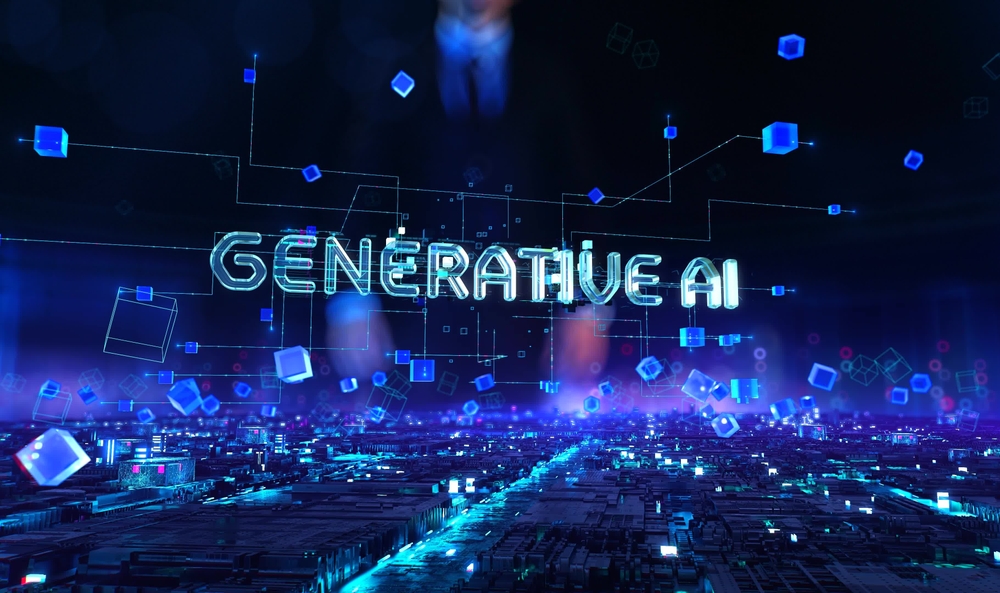A detailed assessment of generative artificial intelligence (AI) shows the increased footprint of big-tech companies through a series of innovations eyeing stake in the burgeoning space. A deep dive shows that generative AI gained substantial traction within the global tech space last year.
The attraction of big tech companies to generative AI is beyond the fear of missing out (FOMO). Instead, the tech giants covet the innovative ability inherent in generative AI to alter problem-solving, decision-making, and creativity approaches.
The versatility realized by generative AI applications is fueling their addition in various sectors, including healthcare, entertainment, and education. The wide range of applications illustrates the rapidly expanding user base, thus expanding market size.
Generative AI Projected to Test $120 Billion Value
The global market for generative AI was 2023, valued at $12.1B. Market observers project the figure to skyrocket in the next decade and test $119.7 billion in 2032.
A reflection on the past years reveals that 2022 was a period when the technology was still in its infancy phase and yet to become mainstream. The generative AI startups only managed to raise $2.6 billion in 110 deals.
A review of generative AI in 2023 shows that the firms raised nearly $50 billion with prominent players such as Microsoft-backed OpenAI, Inflection AI, and Anthropic to secure billions of dollars each.
The clear metric for the rising interest is the number of searchers for the ‘generative AI’ term. The growing interest traces to the unveiling of the ChatGPT platform by the Sam Altman-led OpenAI. The interest would spike in June predominantly in Israel and Asian countries, including Hong Kong, China, Singapore, and India.
In the evolving realm of AI-enabled technology, the generative AI application is expanding its scope as other entities integrate the technologies into the operations. ChainGPT.org founder and chief executive Ilan Rahkmanov illustrated that reputable brands are presently engaging with generative AI as a competitive edge.
Rahkmanov, who founded the AI infrastructure provider targeting blockchain entities and Web3 projects, hailed generative AI for its explosive capability. He admits that few understand how generative AI will evolve in the long-term future despite more organizations and individuals leveraging the technology.
The uncertainty is not slowing down the emergence of sophisticated model training on the associated data sets.
Mainstream Entities Pursue Generative AI Opportunities
Opportunities surfacing within generative AI applications are attracting more mainstream organizations into the sector. Leading investment bank JPMorgan revealed plans to unveil the DocLLM.
JPMorgan’s DocLLM involves a generative large language model (LLM) customized to offer multimodal document understanding. The model is capable of analyzing and processing data linked with enterprise documents despite their complex text and layout combinations.
DocLLM deploys a unique operational design by overcoming the heavy reliance on image encoders, as commonly witnessed in other multimodal language models. JPMorgan’s DocLLM uniquely prioritizes bounding box information alongside the integration of spatial layout structures.
DocLLM realizes this by utilizing the disentangled spatial attention to refine the attention process within the classical transformers.
Amazon announced its entry into the generative AI game through the integration of a new tool to facilitate sellers. The generative AI tool yields accurate product descriptions, thereby helping the sellers ease new listings.
Amazon Web Services (AWS) recently unveiled the Bedrock profiled as a service guaranteeing access to models offered by different AI entities. Bedrock is gaining popularity for offering a comprehensive developer toolset labeled as instrumental towards scaling generative AI applications.
IBM and Google Join Salesforce in Exploring Generative AI
Mistral unveiled the sparse mixture of experts (SMoE) model that is gaining traction within the developer space. The SMoE model yields efficiency, speed, and scaled feature sets.
The SMoE model offers open-source-based settings, explaining its emergence as the go-to tool among the developer community, eyeing unique language model creations from limited resources.
IBM is leading the traditional tech giants by unveiling the Watson AI platform. The product integrates generative AI techniques with machine learning (ML). The integration extends to the natural language processing (NLP).
Google’s subsidiary DeepMind is sustaining its reputation as a critical player within the generative AI arena. Its advanced output is evident in facilitating Google Brain and Google Translate.
A recent addition by DeepMind is the unveiling of Bard AI, which mirrors the ChatGPT chatbot. Bard AI allows users to generate high-quality text and creative content.
Lastly, cloud-based software giant Salesforce integrated generative AI algorithms into a collective product – Einstein GPT. Einstein GPT is available as an integration within customer relation management to enhance engagement and personalization.
